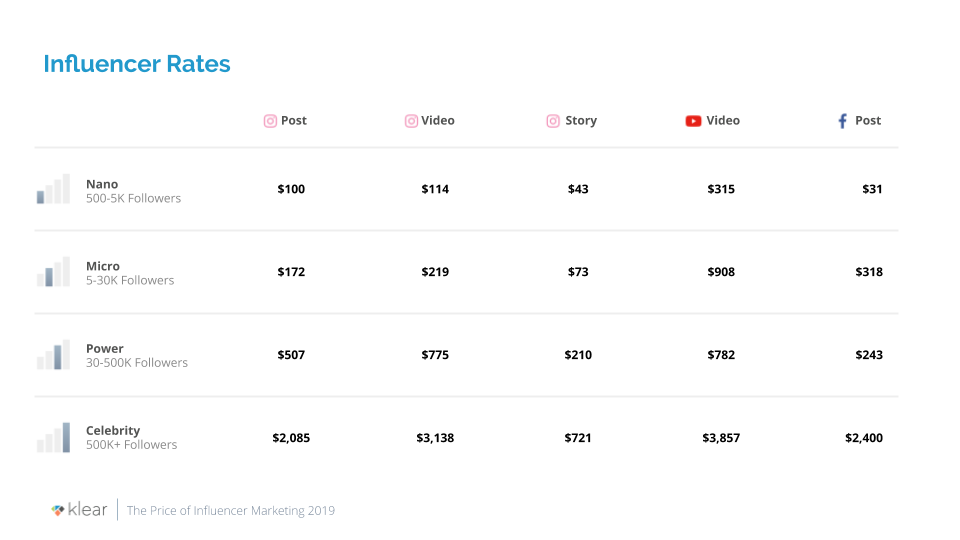According to Adweek the influencer market was worth $2 billion USD in 2017 and is set to reach $10 billion by 2020. Talk about significant growth! So what exactly is influencer marketing, and how can you leverage it for your business?
Influencer Marketing Defined
Hootsuite defines influencer marketing as when:
“A business collaborates with an influential person to promote something. It could be a product, service, or campaign.”
Unlike previous mass media advertising involving celebrities, this new wave of influencer marketing provides a wealth of opportunity for small to medium sized businesses, who can’t afford a Beyonce or David Beckham level celebrity.
Different Influencer Tiers
The growth in influencer marketing is directly related to various social media platforms as they allow users to freely create content and grow their own personal following; ‘social media influencers’. In turn, these influencers are then able to earn revenue from these platforms, which has steered even more people than before to get involved in these platforms in the hopes of becoming a famous “influencer”.
This has led to a high saturation of ‘influencers’ leading to influencer tiers being established:
Nano-influencers: 500 – 5,000 followers
Micro-influencers: 5,000 – 30,000 followers
Power influencers: 30,000 – 500,000 followers
Celebrity influencers: 500,000 followers +
And of course the prices for those in these high tiers can be expensive:
Selena Gomez = $550,000 per post
Kim Kardashian = $500,000 per post
Cristiano Ronaldo = $400,000 per post
Source: Search Engine Journal
These prices are obviously too expensive for small to medium business and therefore many look to smaller influencers instead. Not only are their prices significantly cheaper, but in many cases their smaller audience is more targeted to a specific niche or demographic, which can be highly beneficial for your business.
The increased growth in influencer marketing has however brought about a variety of issues and it is important to know how to deal with these to avoid any nasty surprises and to get the most out of your influencer campaign.
Working with Influencers (Issues and Solutions)
1. Pricing
As the prices amongst influencers can vary, it is important to gain an understanding of typical costs. There are a few ways of approaching this. One way is by looking at average tier prices (note these are in $USD):

Source: Yena Young, Klear 2019 “How much do influencers charge?”
The second is to base price off engagement rate. To find out your prospective influencers engagement rate you can add up all engagements on a post (like, comments, clicks, shares), dividing by follower count and multiplying by 100. It is also important to look at this rate for both their regular and previous promotional posts. This rate will allow for you to then work out how much an engaged follower is worth to your business.
2. Vanity Metrics
It is important not to get taken in by social media vanity metrics (likes, comments, shares), make sure they are actually providing business for your organisation such as increased traffic or conversions.
Final Tips for Effective Influencer Management
- Make sure your influencer fits your brand and target market.
- Use a social media channel in which your business has an active presence (used often). Consumers will be turned away by a dead or rarely used company page or profile.
- Don’t be afraid to negotiate on price. Some smaller influencers will even accept merchandise as payment, just make sure to be open about your reasoning around price.
- Maintain a positive relationship with your influencer, you may want them for future campaigns.
Redline Digital can help you with find influencers for your campaign and make sure your social platforms are performing at their best, with or without influencer marketing. Contact us today to find out more!
